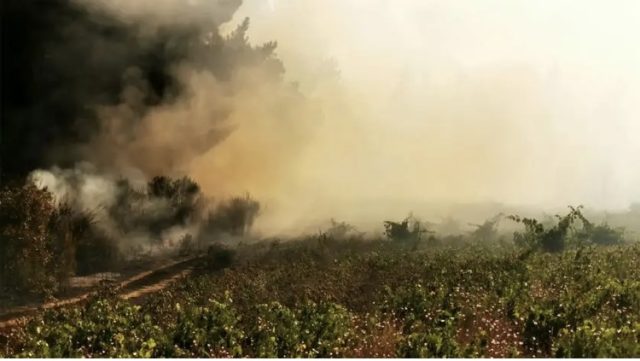This website uses cookies so that we can provide you with the best user experience possible. Cookie information is stored in your browser and performs functions such as recognising you when you return to our website and helping our team to understand which sections of the website you find most interesting and useful.
Signs of new life in Itata after devastating fires and floods
Following the wildfires that spread through Chile’s Itata region in February, there are “miraculous” signs of hope in the vineyards, db can exclusively reveal.

In February this year, one of Chile’s oldest wine producing regions was left reeling after fires ripped through Itata’s vineyards.
More than 3,000 people were evacuated from their homes and many Itata growers, known for their modest-sized plantings of around one hectare each, but boasting precious old bush vines aged more than 150 years, had their vineyards completely wiped out. In total, an estimated 150,00 ha were scorched.
Speaking exclusively to the drinks business at an event in London yesterday, Alejandro Galaz, winemaker at Ventisquero, said there have been promising signs of life in the region during the last month.
“Someone sent me a photo of blackened, burned plants but with little green shoots sprouting through,” he said.
Galaz estimates that around 30% of Itata’s vines were destroyed in the fires, and more still were damaged when rains flooded the region in June.
Ventisquero has been buying grapes from Itata for around 12 years, paying a premium for its exceptional berries, which are drawing producers from every corner of Chile.
“When we first arrived in Itata we offered to pay growers double the price they had been receiving for their grapes,” Galaz told db. “Then we offered to pay them three times that amount if they stayed with us for another year. The year after that, we were paying four times more than the original price for one kilo of grapes.”
Ventisquero uses the grapes it buys from Itata growers to produce a cold-fermented Pais/Moscatel blend and a Cinsault.
“We call Itata the ‘Jurassic Park of Chile’ because of all the different kinds of stones in the soils,” Galaz said.
He explained that while the wildfires narrowly missed the vineyard belonging to the Itata grower he buys from, smoke taint remains an issue in the region.
“Half of the grower’s grapes came to us, and half remained in Itata for the grower to make his own wine. When wines are fermenting they are very sensitive to what’s happening in the air outside and unfortunately the grapes that remained in Itata were affected by smoke taint. The ones that came to us were OK.”
Galaz was in London to show the latest experimental wines from Ventisquero, which has been making expressions born from extreme climates and terroirs such as the Atacama desert, where temperatures frequently climb to 44 degrees, and Patagonia, where vines are battered by fierce winds.
Among the wines tasted were the first vintage of two different expressions from the producer’s ‘Chile Chico’ vineyard in Patagonia; a Sauvignon Blanc and a Chardonnay. Chile Chico is the most southerly vineyard in the world, located around 180km further south than its nearest neighbour.

